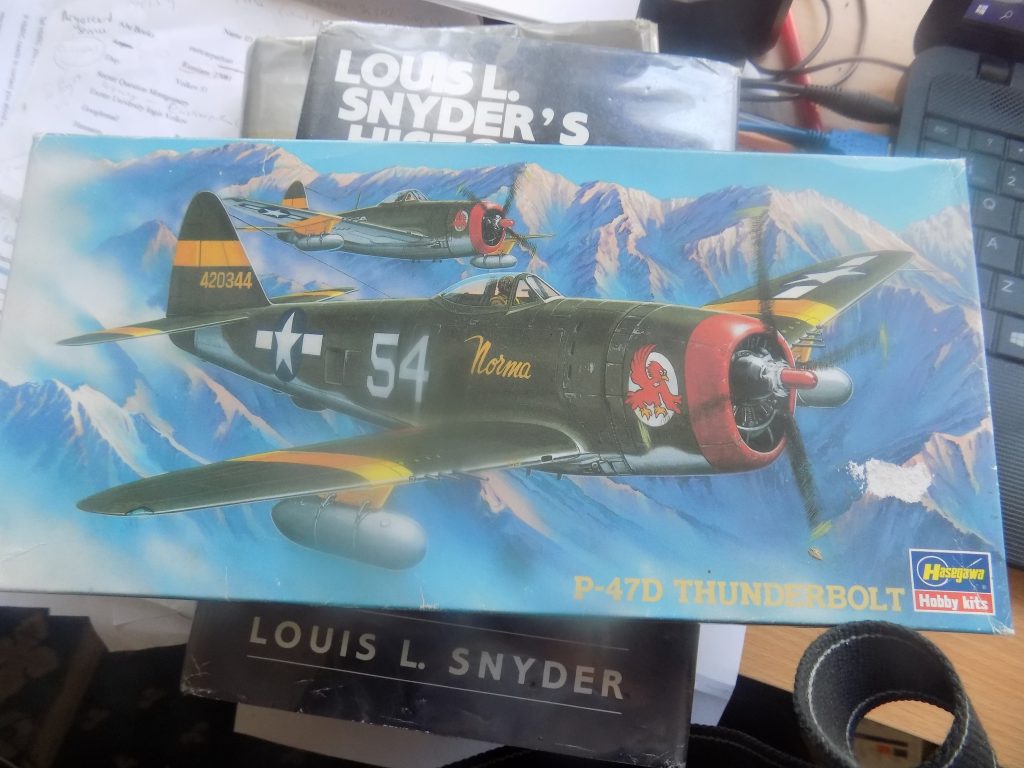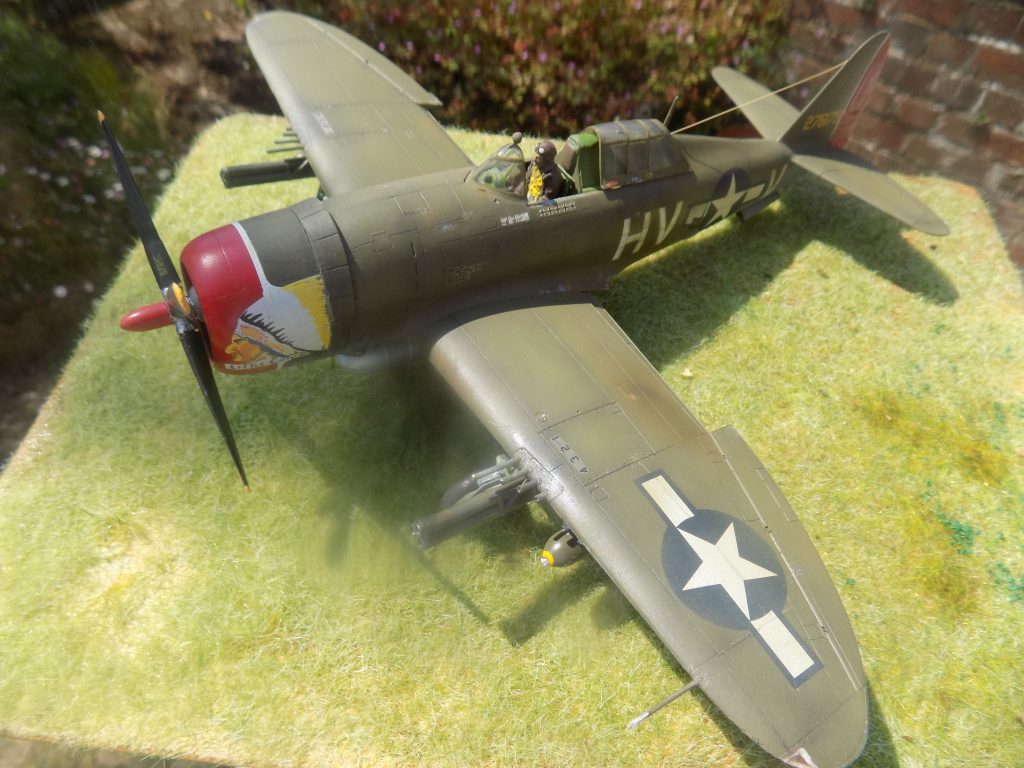
This is my tribute to the mighty American P-47 Thunderbolt which was able to escort high-flying B-17 Flying Fortresses into Germany and proved a match for the Luftwaffe’s FW 190s at 15,000 ft. The P-47 looked similar to the FW-190 from a distance which is why they had distinctive nose (and tail) bands to help Allied aircrew identify them.
Manufactured by the Republic aviation company, the Thunderbolt, or ‘Jug’ to its pilots, was the biggest and most heavily armed single-seat fighter of World War 2.
The massive power and weight of the P-47 design was made possible by the famous Pratt and Whitney 18-cylinder radial R-2800 Double Wasp engine.

This was a straightforward build out of the box and I don’t have any progress photos for this one. The only tricky part was the Indian Chief’s head with the white band decal. Somehow I managed to ruin it while trying to snuggle it around the cowling and nearly gave myself a heart attack in the process! A quick order to Hannants, my go to online model shop, for an aftermarket replacement set retrieved the situation and I managed second time round which settled the heart flutters.
Decals can be the downfall of a model and I nearly proved the point this time!
There are lots of exotic and colourful marking schemes for American World War 2 fighters which is one of the great joys of modelling them. The nose art was quite often of a young lady in various states of undress which can be an added bonus depending on your inclinations!
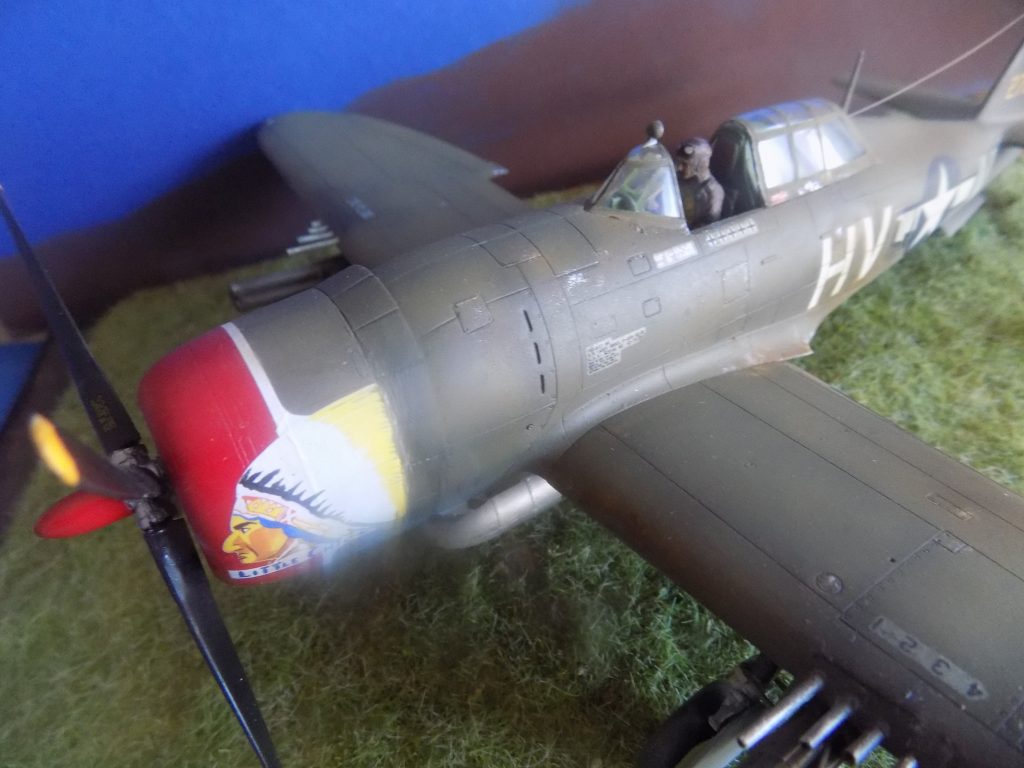
Along with Spitfires and Lockheed P-38 Lightnings the P-47 initially formed the backbone of the USAAF Eighth Air Force’s escort fighter force, the ‘little friends’ as the American bomber crews called them, but on the longest missions these had to had to turn back practically at the German border, roughly between Cologne and Emden. The P-47 was a thirsty bird and its high rate of fuel consumption meant that early versions were restricted in range.
By late 1943, equipped with drop tanks, the P-47 was able to accompany the B-17s and B-24s to Berlin and back.

P-47s also undertook independent fighter sweeps and ground attack missions. In the fighter-bomber ground-attack role, the P-47 could carry five-inch rockets or a bomb load of 2,500 pounds.
The P-47 was by far the heaviest fighter plane, fully loaded its gross weight in the later models reached 21,000 pounds! The Douglas C-47 Cargo plane weighed 26,000 pounds.
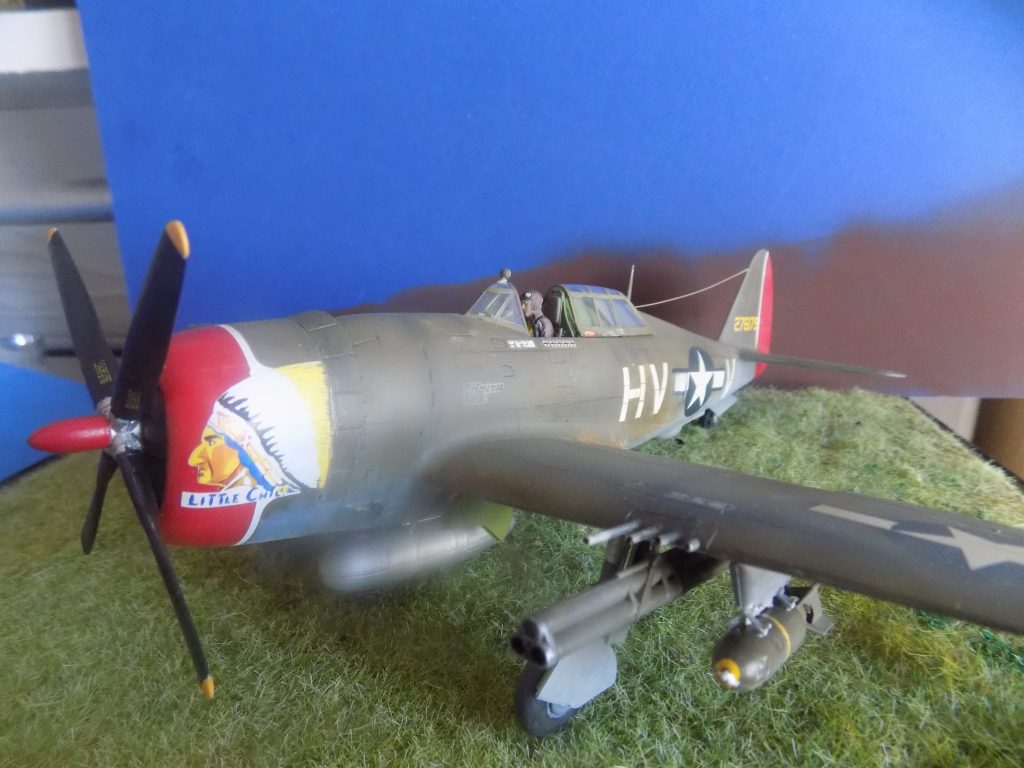
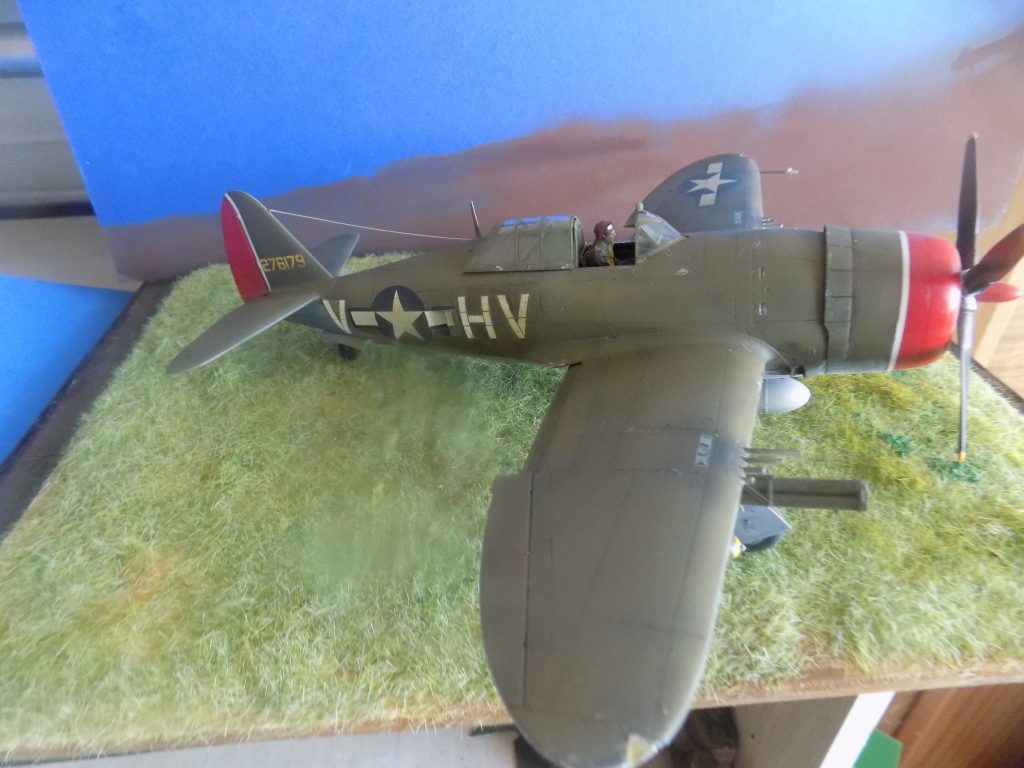
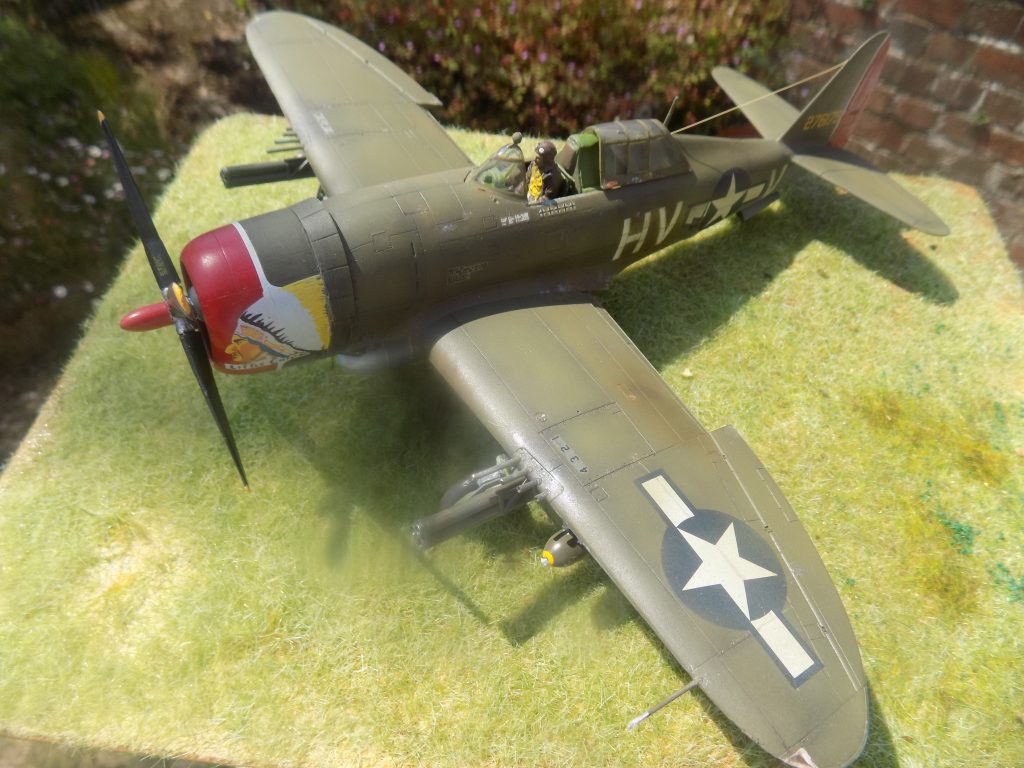
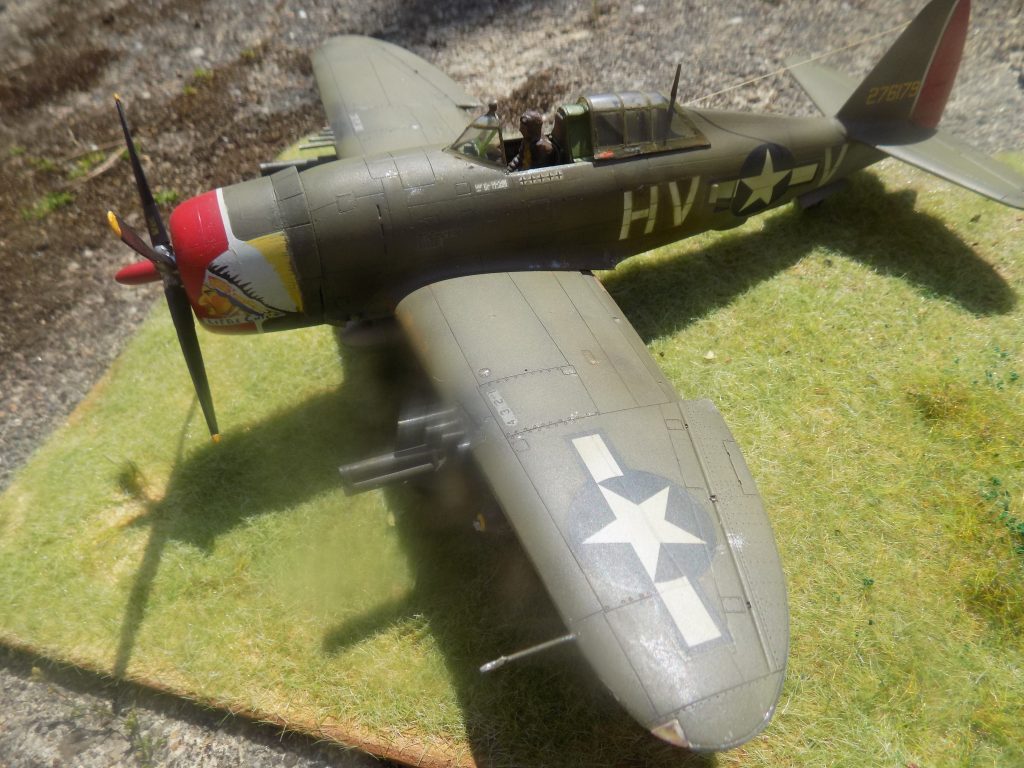
The P-47D Razorback also served with the RAF and designated ‘Thunderbolt Mark 1’ while the bubble top P-47D-25s which they received were designated ‘Thunderbolt Mark IIs’. These had the upper rear fuselage flattened and a tear drop canopy placed over the cockpit for improved rearward vision, a feature included on all versions of the P-47 produced after the D-25. This revision reduced the maximum speed of the aircraft somewhat but improved the balance of the design as a fighter aircraft.
